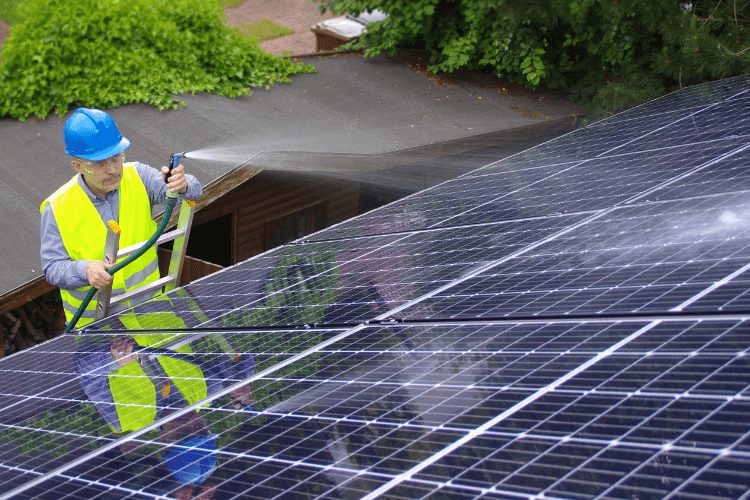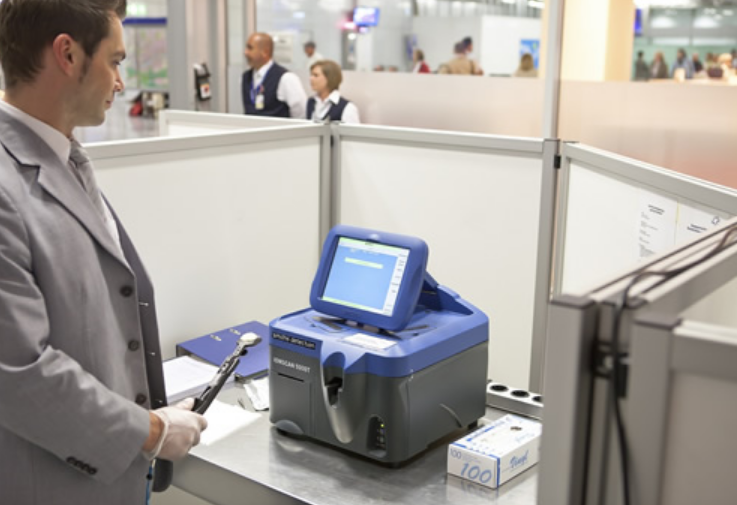Maximizing Energy Efficiency with Photovoltaic Systems
Photovoltaic (PV) systems are a cornerstone of renewable energy technology, converting sunlight directly into electricity through the photovoltaic effect. This process involves the use of semiconductor materials, typically silicon, which absorb photons from sunlight and release electrons, generating an electric current. The fundamental unit of a PV system is the solar cell, which is assembled into modules or panels.
These panels can be installed on rooftops, ground mounts, or integrated into building materials, making them versatile for various applications. The efficiency of a PV system is influenced by several factors, including the angle of installation, geographic location, and the presence of shading from trees or buildings. The growth of photovoltaic technology has been remarkable over the past few decades, driven by advancements in materials science and manufacturing processes.
Modern PV systems can achieve efficiencies exceeding 20%, with some high-performance models reaching up to 25%. This efficiency is critical as it determines how much electricity can be generated from a given area of solar panels. Additionally, the cost of solar technology has decreased significantly, making it more accessible to homeowners and businesses alike.
As a result, photovoltaic systems have become an integral part of the global energy landscape, contributing to the reduction of greenhouse gas emissions and promoting energy independence.
Designing an Efficient Photovoltaic System
Designing an efficient photovoltaic system requires a comprehensive understanding of both the energy needs of the user and the environmental conditions at the installation site. The first step in this process is conducting an energy audit to determine the total energy consumption of the household or facility. This audit helps in sizing the PV system appropriately to meet current and future energy demands.
Factors such as peak load times, seasonal variations in energy use, and potential increases in consumption should be considered to ensure that the system can provide adequate power throughout the year. Once the energy requirements are established, the next phase involves assessing the site for solar potential. This includes evaluating factors such as solar irradiance, which varies by location and time of year, as well as shading from nearby structures or vegetation.
Tools like solar pathfinders or software simulations can help in analyzing these aspects. The orientation and tilt of the solar panels are also crucial; panels facing south at an optimal angle typically yield the highest energy production. By carefully considering these design elements, one can maximize the efficiency and output of a photovoltaic system.
Selecting the Right Components for a Photovoltaic System
The selection of components for a photovoltaic system is pivotal in ensuring its performance and longevity. Key components include solar panels, inverters, mounting systems, and balance-of-system (BOS) components such as wiring and connectors. When choosing solar panels, it is essential to consider their efficiency ratings, warranty periods, and degradation rates.
Monocrystalline panels are known for their high efficiency and space-saving design but tend to be more expensive than polycrystalline options. On the other hand, thin-film solar panels offer flexibility and lightweight characteristics but generally have lower efficiency. Inverters play a critical role in converting the direct current (DC) generated by solar panels into alternating current (AC), which is used by most household appliances.
There are several types of inverters available, including string inverters, microinverters, and power optimizers. String inverters are commonly used for residential systems due to their cost-effectiveness; however, microinverters can enhance performance in shaded conditions by optimizing each panel’s output individually. Additionally, selecting high-quality mounting systems is essential for ensuring that panels are securely installed and can withstand environmental stresses such as wind and snow loads.
Installing and Maintaining a Photovoltaic System
The installation of a photovoltaic system is a critical phase that requires careful planning and execution to ensure safety and compliance with local regulations. It is advisable to engage certified professionals who have experience with solar installations to navigate the complexities involved. The installation process typically begins with site preparation, which may include clearing debris and ensuring that the roof or ground mount is structurally sound.
Following this, mounting brackets are installed to secure the solar panels in place. Once the panels are mounted, electrical connections are made between the solar panels and the inverter, followed by connecting the inverter to the electrical grid or battery storage system if applicable. After installation, it is crucial to conduct thorough testing to verify that all components are functioning correctly and safely.
Maintenance of a photovoltaic system is equally important; regular inspections should be performed to check for dirt accumulation on panels, wear on electrical connections, and overall system performance. Cleaning panels periodically can significantly enhance their efficiency, especially in areas with high dust or pollen levels.
Integrating Energy Storage with Photovoltaic Systems
Energy storage systems have become increasingly important in conjunction with photovoltaic systems as they allow for greater flexibility and reliability in energy use. By integrating batteries with PV systems, users can store excess energy generated during peak sunlight hours for use during periods of low sunlight or high demand. This capability not only enhances energy independence but also provides backup power during outages, making it an attractive option for both residential and commercial applications.
When selecting an energy storage solution, various factors must be considered, including battery chemistry, capacity, discharge rates, and cycle life. Lithium-ion batteries are popular due to their high energy density and efficiency; however, alternatives such as lead-acid or flow batteries may be more suitable for specific applications based on cost or longevity requirements. The integration process involves connecting the battery system to the inverter and ensuring that appropriate charge controllers are in place to manage energy flow effectively.
This synergy between PV systems and energy storage can lead to significant cost savings on electricity bills while contributing to a more sustainable energy future.
Monitoring and Optimizing Photovoltaic System Performance
Monitoring is an essential aspect of maintaining optimal performance in photovoltaic systems. Advanced monitoring solutions allow users to track real-time data on energy production, consumption patterns, and system health through online platforms or mobile applications. These tools provide insights into how much energy is being generated compared to expected outputs based on weather conditions and historical performance data.
By identifying discrepancies early on, users can address issues such as equipment malfunctions or shading problems before they lead to significant losses in efficiency. Optimization techniques can further enhance system performance by adjusting operational parameters based on real-time data analysis. For instance, smart inverters can dynamically adjust their output based on grid conditions or user demand, maximizing energy utilization while minimizing waste.
Additionally, software solutions can analyze historical performance data to recommend maintenance schedules or upgrades that could improve overall efficiency. By leveraging these monitoring and optimization strategies, users can ensure that their photovoltaic systems operate at peak performance throughout their lifespan.
Maximizing Energy Efficiency with Smart Energy Management Systems
Smart Energy Management Systems (SEMS) represent a transformative approach to managing energy consumption in conjunction with photovoltaic systems. These systems utilize advanced algorithms and machine learning techniques to analyze energy usage patterns and optimize consumption accordingly. By integrating SEMS with PV systems, users can automate processes such as load shifting—where non-essential appliances are powered during peak solar generation times—thereby maximizing self-consumption of solar energy.
Moreover, SEMS can facilitate demand response strategies that adjust energy usage based on real-time pricing signals from utility providers. For example, during periods of high electricity demand when prices spike, SEMS can automatically reduce power consumption from non-critical loads or draw from stored battery reserves instead of relying on grid power. This not only enhances energy efficiency but also contributes to grid stability by reducing peak demand pressures.
As small business and smart home technologies continue to evolve, integrating SEMS with photovoltaic systems will become increasingly vital for achieving sustainable energy management.
Financial Incentives and Benefits of Maximizing Energy Efficiency with Photovoltaic Systems
The financial landscape surrounding photovoltaic systems has been significantly bolstered by various incentives aimed at promoting renewable energy adoption. Governments at local, state, and federal levels often provide tax credits, rebates, or grants to offset initial installation costs for residential and commercial PV systems. For instance, in the United States, the federal Investment Tax Credit (ITC) allows homeowners to deduct a substantial percentage of their solar installation costs from their federal taxes.
Such incentives make solar investments more financially viable while accelerating the transition toward clean energy sources. In addition to upfront incentives, maximizing energy efficiency through photovoltaic systems can lead to substantial long-term savings on electricity bills. By generating their own power and reducing reliance on grid electricity—especially during peak pricing periods—users can significantly lower their monthly utility expenses.
Furthermore, many regions offer net metering programs that allow users to sell excess electricity back to the grid at favorable rates, providing an additional revenue stream. As energy prices continue to rise globally due to various factors including inflation and supply chain disruptions, investing in photovoltaic systems not only enhances sustainability but also represents a prudent financial decision for homeowners and businesses alike.







